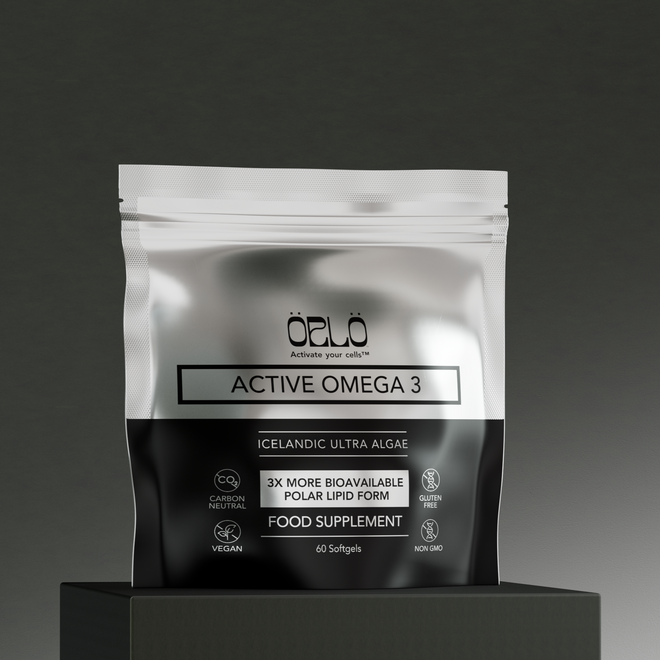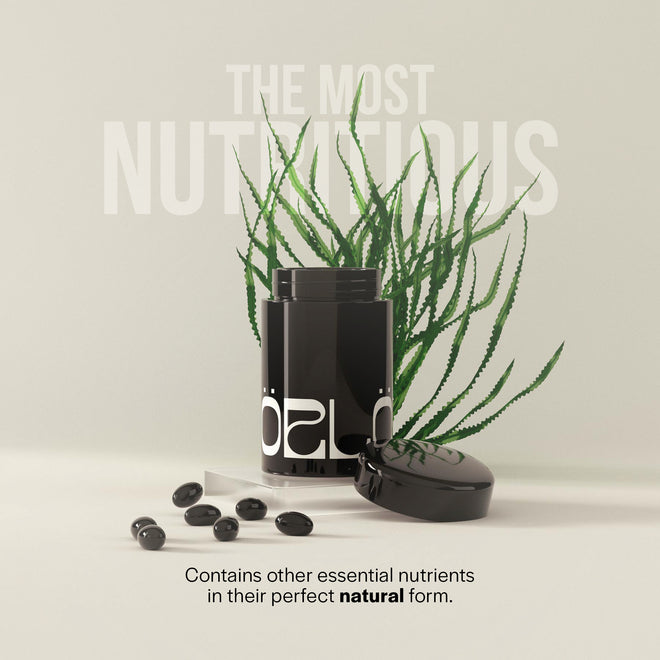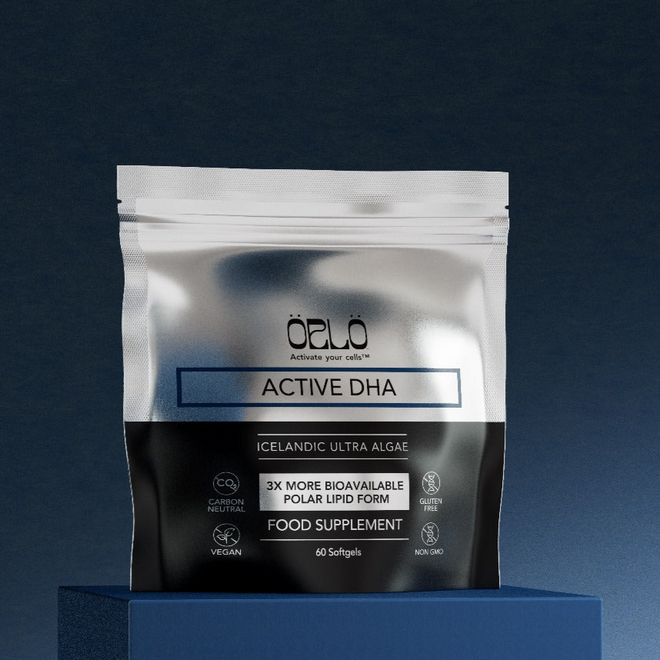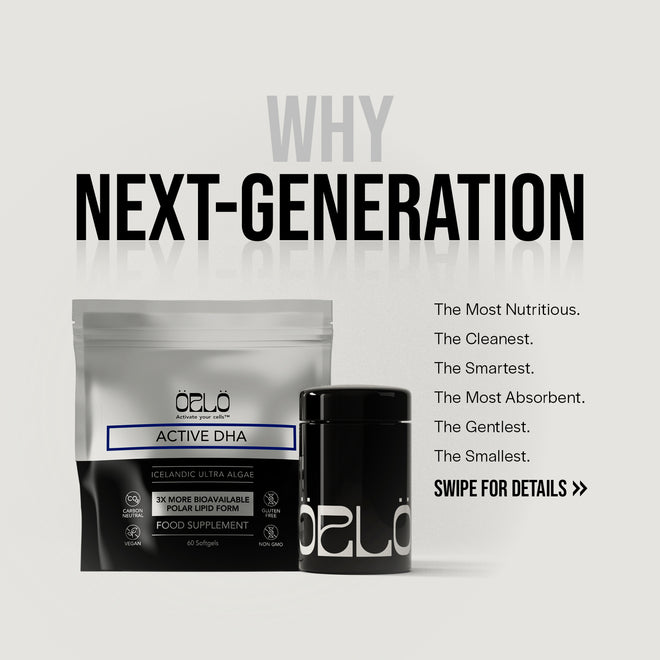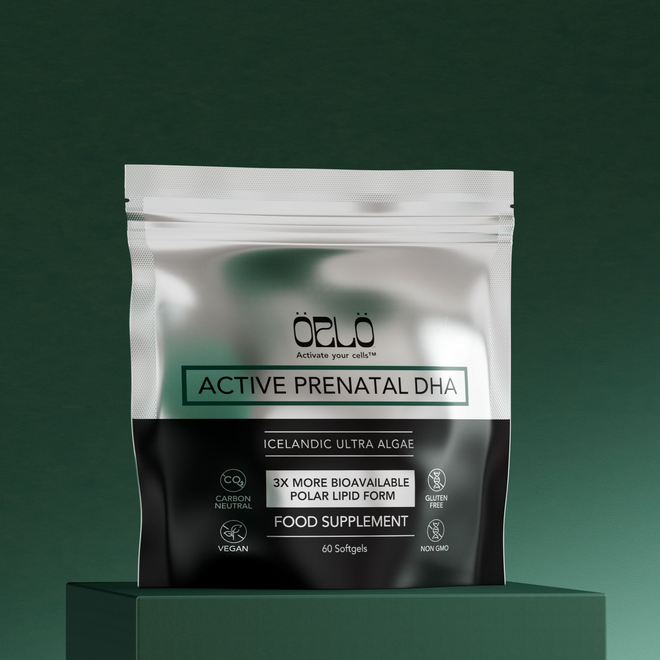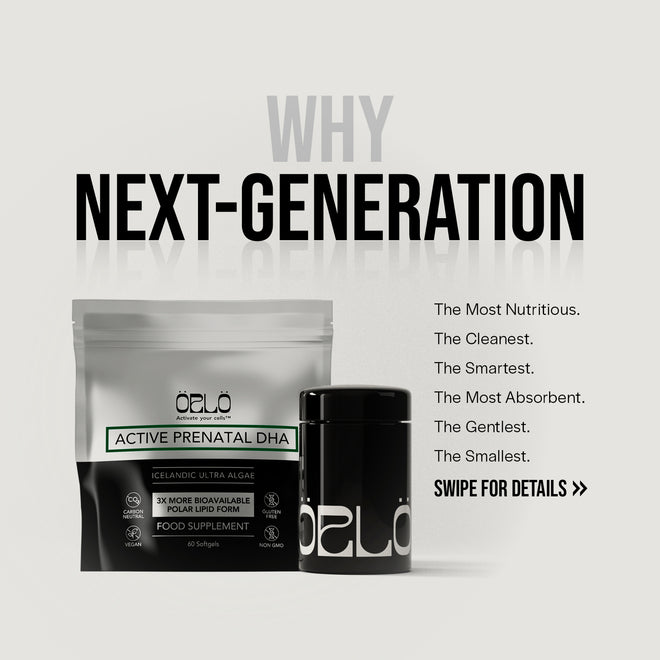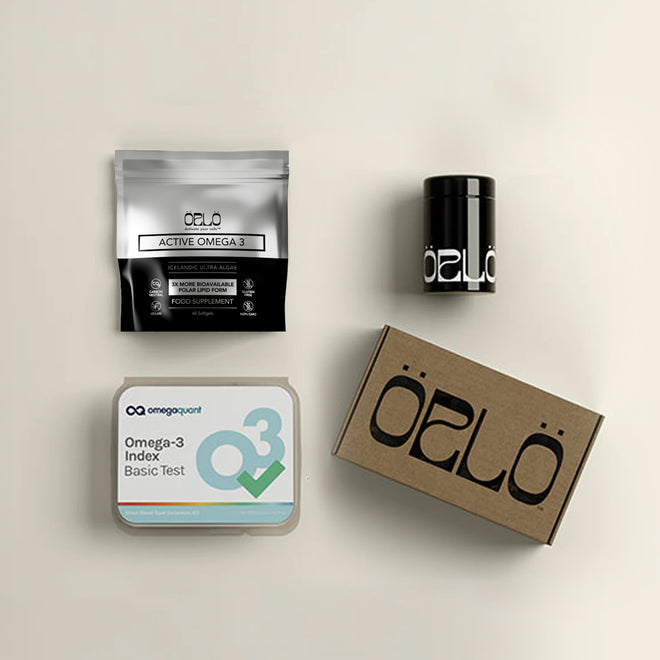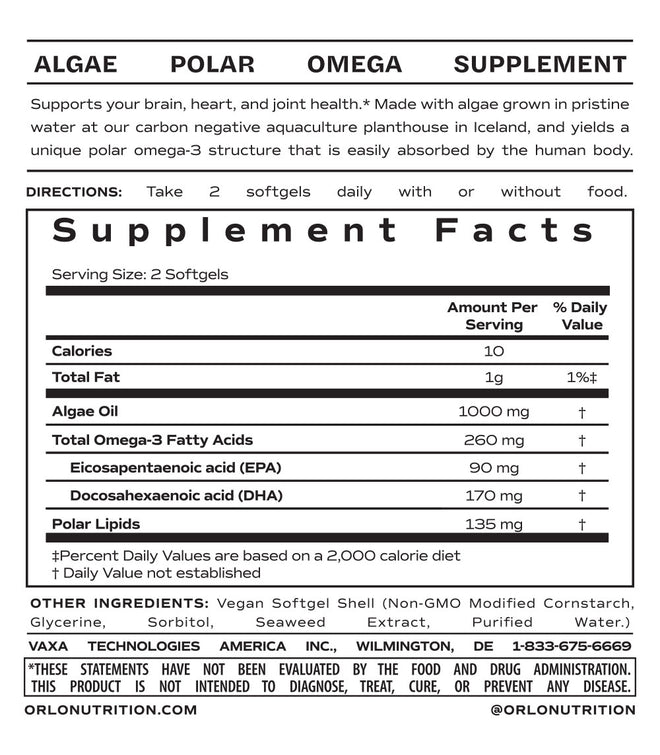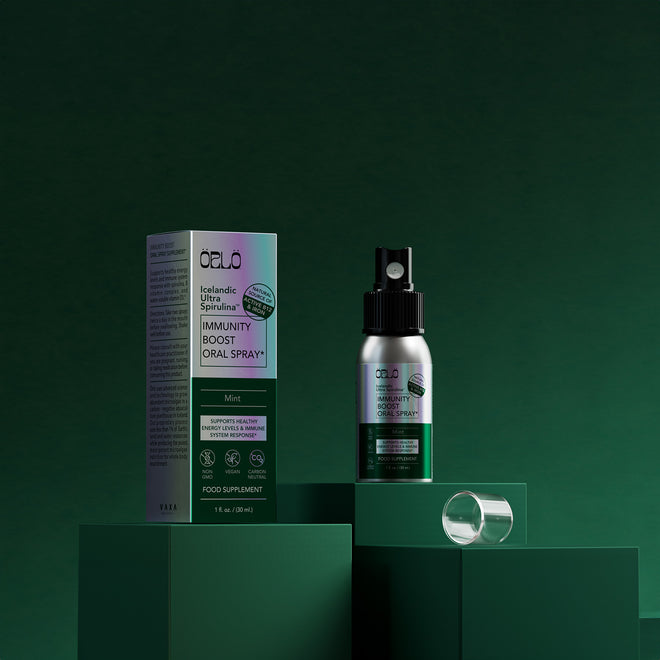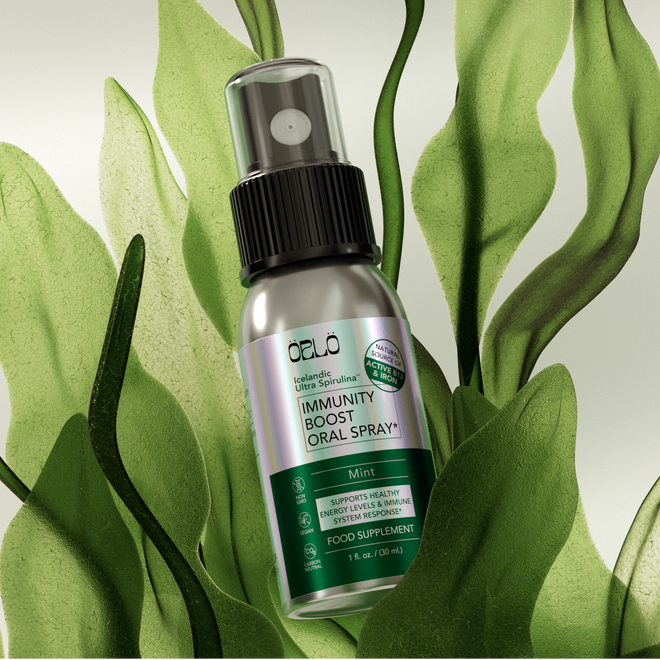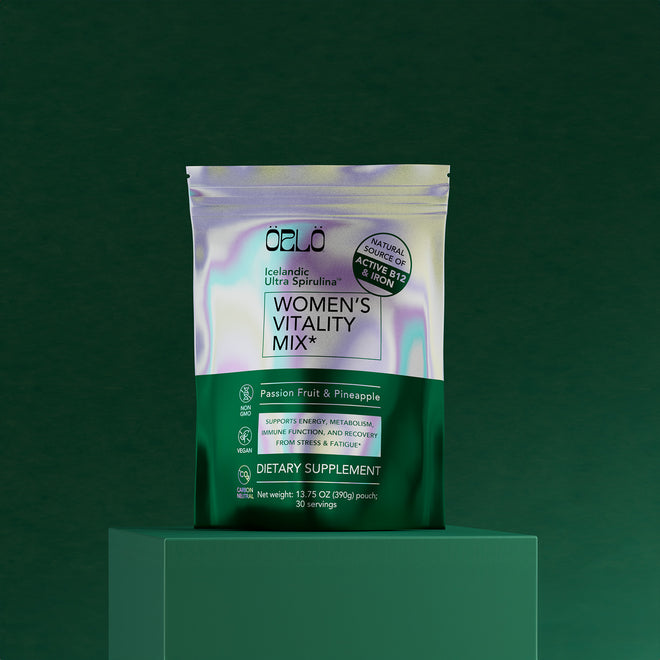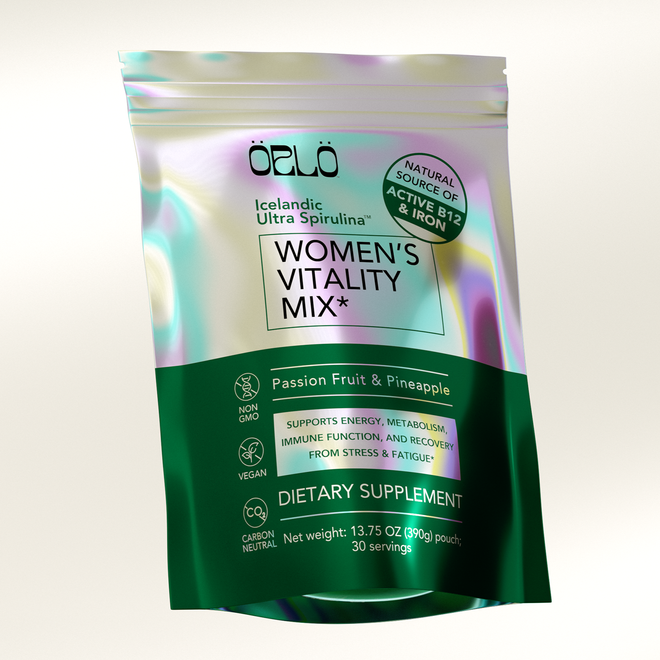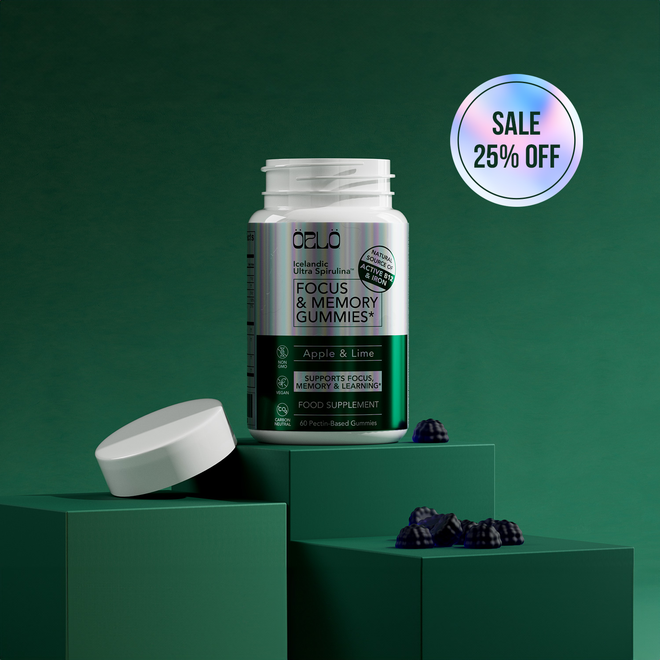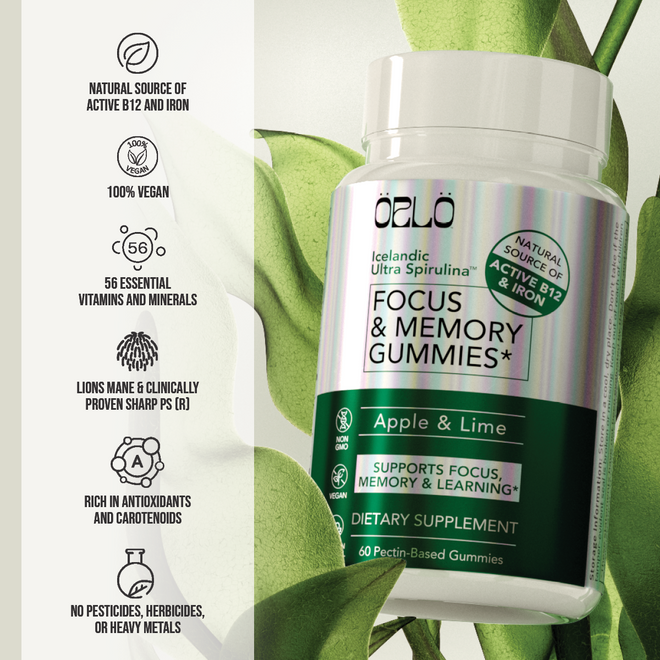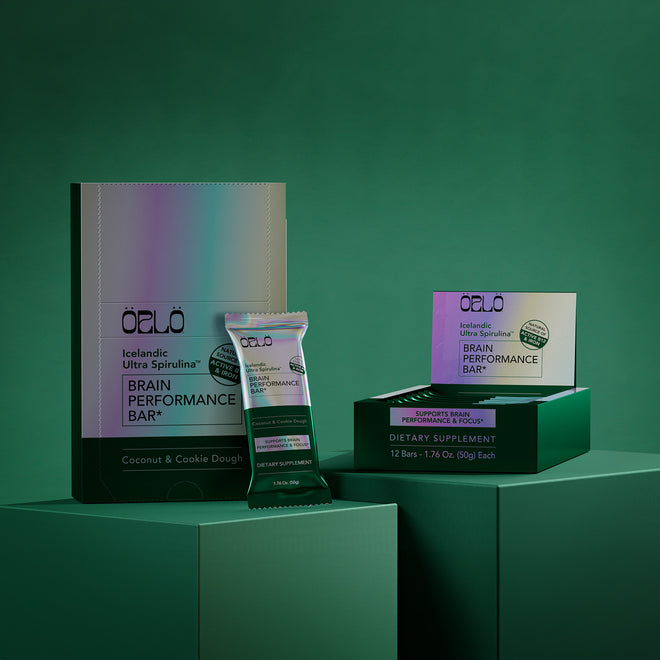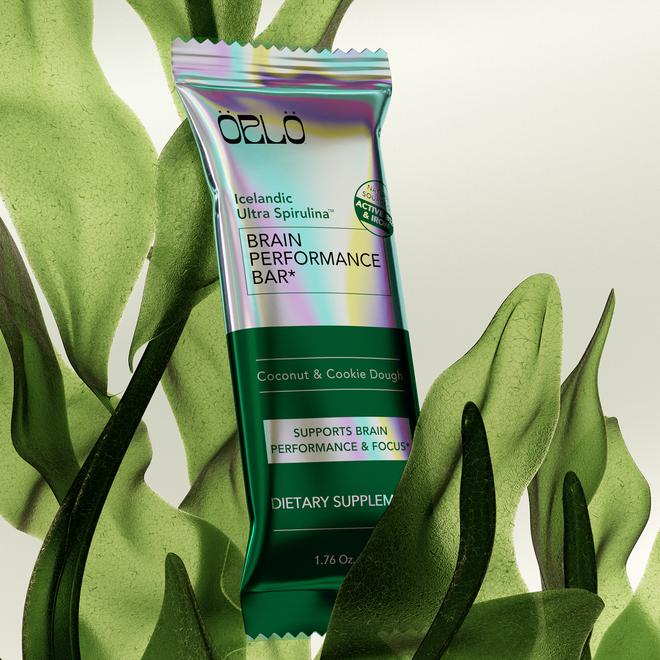Free shipping on purchases over $69
Starve Disease and Regenerate Health - PART 3 OF 4 - Dr. William Li's Eat To Beat Disease Course Review
This is part 3 of a 4 podcast series on Dr. William Li’s New York Times bestseller, Eat To Beat Disease: The New Science of How Your Body Can Heal Itself and his online course of the same name. This springboards from our interview with Dr. Li, which was episode #3. Through his work, Dr. Li invites us to fall in love with food again – and choose the right foods to support a long, happy, and healthy life.
If you are new to this, I encourage you to go back to episode 3, give that show a listen, and come right back here to this series. For your convenience the episodes are listed in order in our show notes for this episode – so if you’re listening to this show on your favorite podcast platform, you can go to the show notes, click the first link, and get started.
Other Episodes In This Series:
Interview with Dr. William Li: https://orlonutrition.com/blogs/podcast/eat-to-beat-disease-how-your-body-can-heal-itself-with-the-right-nutrition-with-dr-william-w-li-physician-and-nyt-bestselling-author
Part 1 of 4: https://orlonutrition.com/blogs/podcast/dr-william-lis-eat-to-beat-disease-course-5-health-defenses-and-5-surprises-part-1-of-4
Part 3 of 4 (this episode: https://orlonutrition.com/blogs/podcast/starve-disease-and-regenerate-health-part-3-of-4-dr-william-lis-eat-to-beat-disease-course-review
Part 4 of 4 (coming soon)
About Dr. William Li:
William W. Li, MD, is an internationally renowned physician, scientist, and author of the New York Times bestseller “Eat to Beat Disease: The New Science of How Your Body Can Heal Itself.” His groundbreaking work has led to the development of more than 30 new medical treatments and impacts care for more than 70 diseases including cancer, diabetes, blindness, heart disease, and obesity. His TED Talk, “Can We Eat to Starve Cancer?” has garnered more than 11 million views. Dr. Li has appeared on Good Morning America, CNN, CNBC, and the Dr. Oz Show, and he has been featured in USA Today, Time Magazine, The Atlantic, and O Magazine. He is president and medical director of the Angiogenesis Foundation and is leading research into COVID-19.
Sign up for his masterclass: https://drwilliamli.com/masterclass/
Sign up for the paid course: http://eat-to-beat-disease.
---
Starve Disease and Regenerate Health - PART 3 OF 4 - Dr. William Li's Eat To Beat Disease Course Review
About this course:

Throughout this course, Dr. Li covers the five groundbreaking health defense systems of the body that he identified in Eat To Beat Disease. They are angiogenesis, or healthy creation of blood vessels, stem cells - which allow our systems to regenerate, the microbiome - which helps us digest our food and assimilate nutrients, DNA protection - which ensures mutations don’t take hold and our immune system - which ensures that infections don’t rage out of control. He talks about the foods that activate your health defense systems, sharing research from studies -- on human populations – and every week he supplies insights from his personal life and provides ideas for how you can incorporate these life supporting foods into your diet.
Before I launch into the dense content from this week, I wanted to share with you some news from Orlo Nutrition. Orlo has been on the market for a short while now, and testimonials are starting to roll in. I wanted to share this email from one of our customers. His name is Justin, and you can review the official review he wrote on orlonutrition.com on the Omega-3 product page.
“So far, I have noticed an improvement in my dry eyes. I live in Arizona, where essentially the entire population suffers from this condition which can make vision blurry. Since starting orlo. I think after 3-4 days, I noticed the improvement. So far a positive experience and I’m extremely happy with the product. Thanks so much!”
When I shared my own story of how omega-3s helped with my eye issues, he went on:
“My partner is an optometrist and has been telling me to take omegas for years for the vision benefits; I tried other supplements but never experienced any noticeable results.”

I’m personally honored that we have been able to help Justin – and I’m sure many like him will benefit from this share. If you have been thinking about trying an omega-3 product, or if you’re considering adding a supplement to support your immune system, I hope you’ll visit orlonutrition.com, browse our products, and consider adding one to your cart. You can subscribe and save 15% today, and you can get an extra 10% off your first order by using the coupon code NWC10.
So… Let’s get into week 3!
As we commence this week’s course, we receive Part 2 of the accompanying workbook. It provides assignments, notes, references and resources – and it’s a vital resource for anyone taking this course, because I received the gift of a hand-cramp or two as I was busy trying to keep up and take notes at the same time with this week’s offering. It was DENSE. Because this week we dive deeply into topics about starving cancer, regenerating health, raising immunity and lowering inflammation, it’s imperative that I once again share a brief disclaimer. The information contained in this podcast is provided for education purposes only. It is not intended to treat, diagnose, cure, or ameliorate any disease state. If you have a medical issue, please consult with your doctor and treatment plan provider to ensure you are getting proper advice and treatment for your unique health situation.
Starve Your Cancer
Cancers require a blood supply to grow, and we can cut off this supply through the opposite of angiogenesis – antiangiogenesis. This can be achieved with medications and with food. To stare cancer we must cut off its blood supply. We can use certain antiangiogenesis foods in combination with other medical treatments once cancers have already formed – and those same foods can help keep those cancers from recurring as well. Key foods in this category are:
- Soy-based foods: Rich in the isoflavone – genistein – lowers the risk of breast cancer and helps prevent its return.
- Tomatoes: Consuming 2-3 cups of tomato sauce a week is associated with a 30% decreased risk of cancer. With prostate cancer, lycopene from tomatoes has been shown to reduce cancer aggressiveness.
- Cruciferous vegetables: High in sulforophanes that target tumor blood vessels and starve cancers.
- Allium species: Garlic, red onion, scallions and shallots all have antiangiongenic cancer-starving properties.
- Fruits are antiangiogenic. The list includes stone fruits, mangos and lychee.
- Seafoods: High in omega-3 polyunsaturated fatty acids, research has shown that higher overall intake of the omega-3s EPA and DHA helps starve cancers. Squid and squid ink, while lower in omega-3s than some of the fatty fish also has a polysaccharide that is antiangiogenic.
- Tea: Green tea in particular is high in epigallocatechin-e-gallate (EGCG), a powerful tool against cancers. He suggests drinking over 4 cups a day from teas including green tea, matcha, jasmine tea, oolong, and sencha.
For those taking the course, we receive an extensive list of cancer-starving foods. My favorites, not mentioned above, include cheeses including the soft, delectable French cheese, Camembert, and also Gouda – pronounced ‘Howda’ in its native Holland, and Stilton cheese. If you can’t invest in taking the 4 week course, but are loving this content, the next best thing is simply to pick up his book, follow his YouTube and social channels, and get to reading. One of my major takeaways from this week is that eating to beat the worst of diseases is both possible – and it can actually be delightful.
Regenerate Your Health: Feeding Your Health by Improving Circulation: Angiogenesis Stimulation
While we want to keep cancers from getting blood flow, we also need to keep a healthy circulatory system to maintain healthy organs, to be able to regenerate, to maintain a healthy immune system, and more.
Foods that support healthy angiogenesis:
- Barley: Contains beta-D-glucan which has been shown to stimulate new blood vessels
- Seeds: Flaxseed, sunflower, sesame, pumpkin, chia support healthy blood flow to the heart
- Fruit skin: Since it’s easiest to consume healthy amounts in a dried format, you may want to considered dried cranberries, raisins, blueberries, and apricots. All contain ursolic acid. If you eat an apple, go organic and eat the skin too.
- Foods that stimulate regeneration, covered in the next section, are powerful in improving blood flow.

Regenerate Your Health
Regeneration in the context of your health is your body’s way to replenish or replace old cells and damaged tissues. Stem cells are critical to this process. Stem cells help us rebuild our bone, hair, lung, liver, skin, gut and other organs. Stem cell activity slows down as we get older so getting the right balance of nutrients to support their formation is critical.
Foods to regenerate your health:
- Omega-3: Foods and supplements with omega-3s have been shown to activate stem cells which can stimulate regeneration in the muscle, heart, brain and blood vessels. Seafood is a great place to start because they include direct sources of EPA and DHA with healthy proteins.
- Squid ink: Keeps stem cells in the bone marrow healthy.
- Whole wheat: High in fiber to feed your gut microbiome and polyphenols that help stem cells stay active.
- Aronia / chokeberry: A dark berry that contains polyphenols to keep stem cells healthy and regenerate blood vessels.
- Turmeric: A ginger-like root that’s high in curcuminoids, which improve stem cell levels in the blood. Use the spice in cooking, make yourself a golden milk with your favorite plant-based milk – just make sure to also consume it with black pepper. Black pepper contains bioperine, which improves the absorption the actives in herbal products as much as 10-fold. With good reason, cracked black pepper is integrated with almost every recipe that includes turmeric, including curry powders and golden milk. This makes the curcuminoids much more bioactive, health-promoting, offering better DNA protection and better regenerative power.
- Foods with zeaxanthin, a bioactive that helps stem cells regenerate organs. Kale, mustard greens, spinach, watercress, collard greens, Swiss chard.
- Chinese celery: Unlike the celery you see in a typical grocery store, this celery has narrower stalks and boasts more leaf. It is commonly served at Chinese restaurants and is available at Asian grocers. It’s more flavorful and has dramatically more bioactivity than standard celery, stimulating stem cells that can even repair brain tissue after a stroke. Its compounds are available as a drug for stroke patients in China.
- Tea: All types of tea help elevate stem cells in the blood stream and stimulate blood flow. Do not add milk or sugar because they neutralize the benefit.
- Coffee: Rich in chlorogenic acid, it helps stem cells repair and regenerate organs. Again, no milk, no sugar.
- Mediterranean Diet: Consuming a diet with fresh fruits, vegetables, extra virgin olive oil, legumes and a fair amount of seafood will help your body regenerate.
- Caloric restriction: Intermittent fasting or skipping a meal or two here and there supports your body’s stem cell production. By eating less, your body reboots its stem cells. Try not eating after dinner and until lunch the next day a couple of times a week.
- Avoid high fat foods like fried foods, foods with added sugar and excessive salt. Eating like that harms stem cells.
Foods That Kill Cancer Stem Cells
When we find ourselves in a disease state, the last thing we want to do is build healthier cancer cells. Thankfully there are a few key foods that help our bodies recognize the bad cells and kill them off. Not surprisingly, Green Tea is on this list of foods. It contains EGCG which has been shown to kill colon cancer stem cells. Matcha – a green tea powder – has been shown to kill breast cancer stem cells. Purple potatoes, walnuts, extra virgin olive oil, and soy are all great additions to your diet if you have concern about cancer. A comprehensive list is also included in the book, and in the course materials. My favorite cancer stem-cell killers from this list are: Coffee, Dark Chocolate, Blackberries, Cranberries, and Pistachios.
Go With Your Gut – Foods That Support Your Microbiome
Your body actually has more foreign cells than your own. When your microbiome is not healthy, all sorts of problems can erupt. Research has shown that eating a variety of foods keeps your gut microbiome healthiest, and that staying away from processed foods and foods that create a lot of inflammation in your system are bad for your gut health. This can vary by the individual, so ensuring you’re eating foods that support your health and not those that don’t is critical. A good for-instance has to do with autoimmune diseases like Celiac disease. If you have this issue, wheat will wreak havoc on your system. So, as with our earlier recommendation, having a good idea of what foods you are sensitive to as you commence any plan to bolster your microbiome is critical to your success.

You’ll want to be sure you get plenty of prebiotics. Prebiotics are foods that contain a lot of fiber that your gut bacteria loves. The beta-D-glucan found in mushroom caps and stems is a great prebiotic that supports the natural mucosal lining of your gut. This provides a healthy medium for your gut healthy bacteria to flourish. He suggests we try dried mushrooms to broaden our horizons. We can make soups, add them to stir fry dishes, salads, and more. Other great foods to consume include:
- Kiwifruit: Even one kiwi can improve your gut bacteria in 24 hours.
- Brassica vegetables like broccoli, cauliflower, kale, bok choy, cabbage and arugula reduce the amount of toxin-producing bacteria in your gut.
- Dark Chocolate: It decreases harmful bacteria.
- Beans decrease harmful bacteria and support the mucosal lining of the gut.
- Probiotic foods like yogurt, kimchi, and sauerkraut add healthy bacteria to the gut.
- Cheeses like Camembert, Parmegiano-Reggiano and Gouda add probiotics to the gut.
- Breads such as sourdough, pumpernickel and rye add probiotics to the gut and rye lower harmful bacteria.
- Pomegranates are high in elagitannins which support your mucosal lining, creating an environment that Akkermansia mucinophila grows well in. This bacterium supports your immune system and is powerful in combatting cancer. Pomegranate juice is a great way to get a lot of this powerful nutrient without a lot of work.
- Tea: All teas improve the gut microbiome. Tea saponins have also been shown to reduce harmful bacteria.
Remember to avoid artificial sweeteners. They can ruin your microbiomes ability to control blood sugar and they can even cause you to gain weight as a result.
Gene Therapy in The Kitchen
Given everything we learned thus far this week, it’s time to bring our learnings into the kitchen and get cooking. It’s important to acknowledge that no life is free of environmental damage. We spend time in the sun, we breathe air that carries with it pollutants.
In this portion of the course, we hear about how Dr. Li uses specific foods, integrating them into his regimen and cooking with them. We’ve heard bits and pieces of that along the way in this journey. I’m going to drill down now into a few foods that keep making an appearance in our learning.
- Berry juices are nutrient powerhouses that are full of antioxidants. As long as no sugar has been added, the natural sugars in them will support your health. They contain polyphenols, which help to support healthy digestion. They feed the healthy bacteria in your gut. They repel the potential for DNA damage by ridding your body of free radicals.
- Kiwifruit is high in vitamin C, chlorogenic acid, and quinic acid. Consuming 3 kiwis reduced DNA damage by 60% and increases repair of DNA by 66%.
I love making fruit salads that contain stone fruits, kiwi, and berries in the summer months. The acidity of the kiwi balances the sweetness of the stone fruits. The berries add a delicious texture, and the colors that abound create a spectacular presentation. It satisfies your senses and can be a great way to get the benefits of kiwi, berries, and stone fruit all in one simple dish.
- Carrots and carrot juice improves DNA repair due to the natural vitamins like beta carotene and other carotenoids that give them their bright orange color.
- Steamed broccoli reduces DNA damage, even in those who have high loads of toxins. Broccoli sprouts are even more bioactive. Eat the whole broccoli plant, and if you cook it, only steam it or stir fry it briefly, bringing out the bright green color. You want to retain as many of the nutrients in the broccoli as possible.
- Red and pink foods are generally high in lycopene. This includes tomato, watermelon, pink grapefruit and guava. Lycopene helps protect you from sun damage before it occurs. Consume a fair amount of tomato, watermelon, and other red foods to offer ongoing support.
- Seafood: Omega-3s also reduce oxidative stress in the body, limiting DNA damage, while also stimulating DNA repair. Pacific oysters standout because they also produce the DNA protecting antioxidant, glutathione. You can eat them fresh, cooked, or even in an oyster sauce. Oyster sauces are made by simmering the oysters down with soy sauce and a few other ingredients. In office hours this week Dr. Li recommends reading your label to make sure the oyster sauce you use has no added MSG (monosodium glutamate).
- Soy turns on a tumor suppressor gene retinoic acid receptor B2 (RARB2) that prevents cancer growth. 10 grams of soy protein a day is protective. You could even just consume 1.2 cups of edamame beans.
- Coffee: the polyphenols in coffee include chlorogenic acid and caffeic acid, which also turn on the same tumor suppressor, RARB2.
- Turmeric turns on a gene that reduces inflammation in blood vessels which can prevent plaque buildup.
- Telomeres operate as the caps at the end of our DNA strands. As we age, the telomeres get shorter and shorter, and the protection they offer wanes as they dissipate. Think of them like the caps on the ends of your shoelaces. When they are gone, the lace frays, showing significant damage quickly. Some foods can lengthen telomeres, effectively reversing cellular aging. Foods, and dietary choices that support our telomere length include:
- Coffee
- Tea
- Nuts and seeds
- The Mediterranean Diet
- The Asian Diet
The following choices are terrible for your telomere length:
- High fat foods
- Processed meats
- Sugar sweetened beverages
- Stress
- Exposure to toxins
- Smoking
Raise Immunity, Lower Inflammation
In this stressful world we live in, working to raise our immunity while lowering inflammation at the same time is critical in supporting our long-term health. Key foods are standouts in this arena.
- Mushrooms: They contain beta-D-glucan, a soluble fiber or prebiotic that feeds your microbiome. Eat the cap and stem. Consider dried mushrooms. Dr. Li advises us to cook mushrooms or wash them really well to ensure we don’t digest bad bacteria with them. Mushrooms support our mucous membranes, and a healthy biome from our mouth to our bladder and our gut.
- Garlic and relatives support the immune system. Add them to savory dishes liberally.
- Broccoli sprouts when consumed before a flu vaccine have been demonstrated to boost its effectiveness by 100 times.
- Ellagic acid: Get plenty of this important prebiotic by consuming tart strawberries, blackberries, pomegranate, and cranberries or their juices. Just don’t drink sugar-sweetened versions.
- Blueberries are rich in anthocyanins which can double the natural killer cells and T-cells.
- Oysters – they boost your immune system due to the peptides and proteins in them. You can even get the benefits by cooking with oyster sauce (with No MSG) and even get them tinned.
Lowering inflammation in your body is critical if you want to live a long, happy, and healthy life. Out of control inflammation can even lead to declining health cascades and autoimmune diseases. Get plenty of rest. Eat good food with a nutrient dense assortment of health promoting foods. Don’t eat processed foods and get plenty of vitamin C. Getting plenty of Vitamin C from the foods you eat and all the other antioxidants they naturally contain actually lowers inflammation. Oranges, tomatoes, strawberries, guava, grapefruit and kiwi are all great sources of vitamin C and antioxidants.
And are you surprised to hear that before Dr. Li wraps this week’s course content, he reminds us of the power of Green Tea? Some of my favorites from this course activate all five (5) of our health defenses. This list includes:
- Green Tea
- Coffee
- Chocolate
- Red Wine (1 glass)
I want to remind everyone that Dr. Li is commencing his new session of this course on July 27th, 2022, just a week away. While the course is comprised of modules you can take at your own pace, you can participate in some Q&A sessions live with Dr. Li as part of the course. You can sign up for this course at a discounted rate by following the link on the blog associated with this podcast. Just visit our blog page on orlonutrition.com and you can head right over.
Next week I will share reflections from our 4th and final week of Dr. Li’s course. It promises to provide a tour through the world of healthy eating and also go over Dr. Li’s famous 5x5x5 Everyday Plan. We will integrate the learning in one final package. And then, I’ll be bringing Dr. Li back on this show to reflect on his work together, answer community questions, and perhaps get a preview of the new book he’s so diligently working on right now.
If you have any thoughts or questions, please share them directly by sending me an email note hello@orlonutrition.com. And remember to rate, review and subscribe on your favorite listening platform. Every bit helps guide our success and your feedback matters. You can suggest topics or future guests – in your review – or in a note to me via email or in the contact form from our site at orlonutrition.com. Join the conversation and this health journey.
So, perhaps today, as I raise my cup of green tea, you’ll raise your favorite beverage with a square of dark chocolate and say it with me. Here’s to your health!
Other Episodes In This Series:
Interview with Dr. William Li: https://orlonutrition.com/blogs/podcast/eat-to-beat-disease-how-your-body-can-heal-itself-with-the-right-nutrition-with-dr-william-w-li-physician-and-nyt-bestselling-author
Part 1 of 4: https://orlonutrition.com/blogs/podcast/dr-william-lis-eat-to-beat-disease-course-5-health-defenses-and-5-surprises-part-1-of-4
Part 3 of 4 (this episode: https://orlonutrition.com/blogs/podcast/starve-disease-and-regenerate-health-part-3-of-4-dr-william-lis-eat-to-beat-disease-course-review
Part 4 of 4 (coming soon)
ABOUT DR. WILLIAM W. LI

William W. Li, MD, is an internationally renowned physician, scientist, and author of the New York Times bestseller “Eat to Beat Disease: The New Science of How Your Body Can Heal Itself.” His groundbreaking work has led to the development of more than 30 new medical treatments and impacts care for more than 70 diseases including cancer, diabetes, blindness, heart disease, and obesity. His TED Talk, “Can We Eat to Starve Cancer?” has garnered more than 11 million views.
Dr. Li has appeared on Good Morning America, CNN, CNBC, and the Dr. Oz Show, and he has been featured in USA Today, Time Magazine, The Atlantic, and O Magazine. He is president and medical director of the Angiogenesis Foundation and is leading research into COVID-19.
